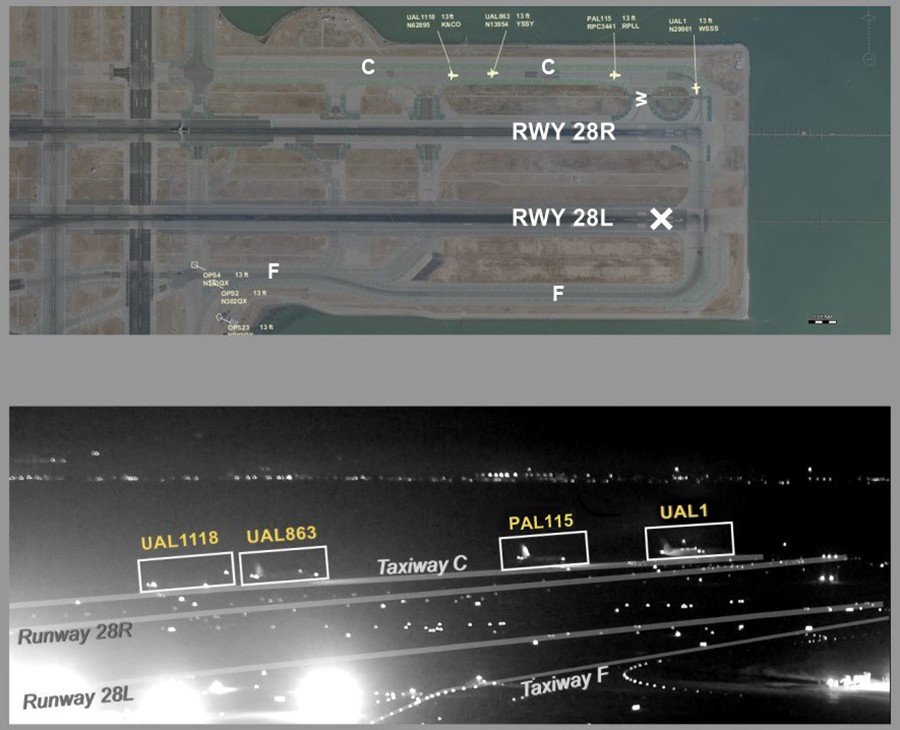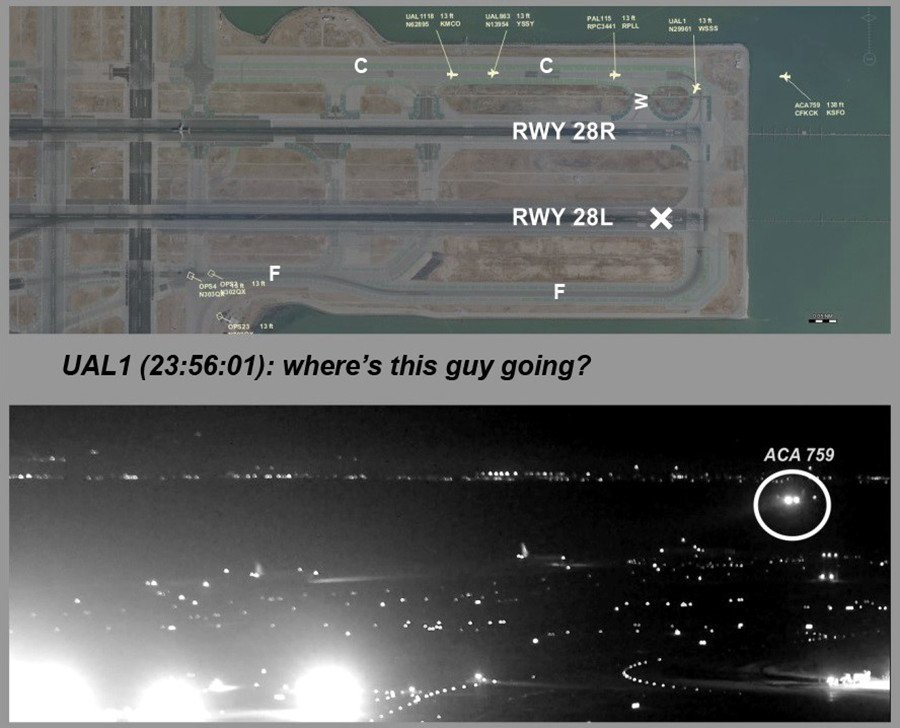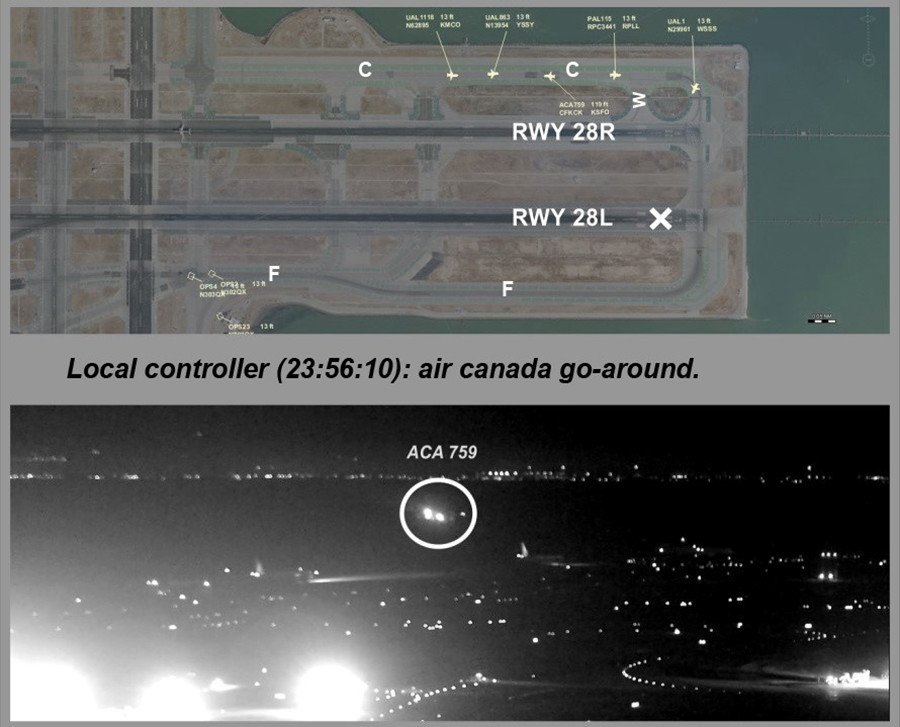Photos show Air Canada flight’s horrifyingly close call at San Francisco airport

An Air Canada plane attempted to land on the wrong runway at San Francisco airport recently – at one point coming within 59ft of four planes waiting below, according to photos and data released by the US National Transportation Safety Board.
The Air Canada Airbus 320 from Toronto was cleared to land on runway 28R at San Francisco International Airport just before midnight on July 7, according to an investigation update from the NTSB.
READ MORE:‘Greatest aviation disaster in history’ averted at last minute
A map of the airport’s tarmac layout shows runway 28R is between runway 28L and taxiway C.

However 28L was out of service as it was under construction. Despite a 20ft flashing ‘X‘ signal on the runway and prior notice of its closure, the Air Canada pilots saw two lit-up runways and assumed taxiway C was their intended target.
At the time, four planes sat on taxiway C awaiting their take-off clearance: two United Airlines Boeing 787s, a Philippines Airlines Airbus A340, and a United Airlines Boeing 737.
According to the Flight Data Recorder, the Air Canada plane lined up to land on taxiway C and was about 0.7 miles (1.1km) from the landing threshold and some 300ft above ground level when flight crew alerted the ATC tower. Spotting lights on the runway, the crew requested landing confirmation from the controllers.

At that point, the plane was too near the taxiway to be spotted on the radar system used to prevent collisions. It actually didn’t appear on the air traffic control display “for about 12 seconds,” according to NTSB.
READ MORE: Giant hailstones pummel wings & cockpits of Istanbul aircraft (PHOTOS, VIDEOS)
The flight was again re-cleared to land on runway 28R, and was 0.3 mile from the landing threshold on taxiway C, when the first United Airlines flight awaiting take off noticed its impending approach. The Philippine Airlines plane sitting second in the queue flashed their landing lights to alert the approaching plane of their mistake.
Air Canada was 85ft above the ground when they realized their potentially fatal error and powered the plane’s thrusters to abort landing, narrowly passing over the four planes below.
“About 2.5 seconds after advancing the thrust levers, the minimum altitude recorded on the FDR was 59ft [above ground level],” reads the NTSB report.

By the time air traffic controllers directed the Air Canada pilots to fly around, they had already begun their climb.
READ MORE: Jet blast kills tourist at world-famous Caribbean beach
Audio of air traffic control communications captured the concern of the pilots watching the approaching Air Canada flight. “United One, Air Canada just flew directly over us,” one says, while another says: “Where’s this guy going? He’s on the taxiway.”
The NTSB was not alerted to the incident until July 9, however at that point Air Canada’s cockpit voice recorder had been overwritten. The agency says its in the preliminary stages of their investigation.
Deputy Dir Aviation Safety Dana Schulze shared investigation update w/Congressional staff abt July near miss @flySFOhttps://t.co/anf2ho9OUapic.twitter.com/qqClRR3asd
— NTSB (@NTSB) August 2, 2017












